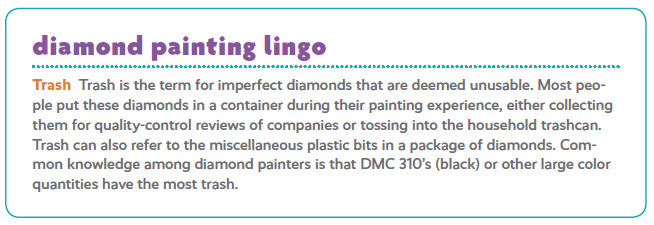The following excerpt is from The Diamond Painting Guide and Logbook by Jennifer Roberts.
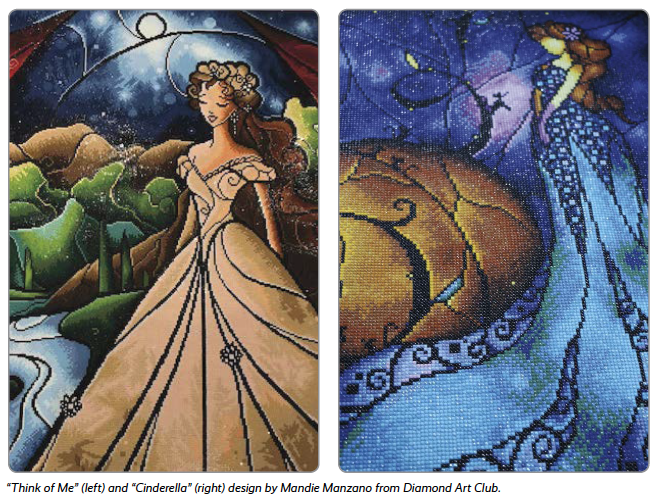
Diamond Painting – The Diamonds
Diamonds are the heart and soul of diamond painting. Who would have guessed that small pieces of plastic could be used to create a beautiful masterpiece? I hope this leads you to feel empowered in your own life. When using the gifts and talents you were born with, you will do great and mighty things! Keep this in mind as we dig into what a diamond can do.
What is a Diamond?
◆ Diamonds are small plastic pieces molded to a specific shape to be used on a mapped-out and color-coded template.
◆ Standard diamond shapes are round or square.
- Round diamonds are easier to place and recommended for beginners.
- Square diamonds are more difficult to place, as they are meant to be lined up and touching one another.
◆ Diamonds are considered 3D or 5D diamonds. The more facet cuts, the more a diamond will sparkle, as it will have more angles and surfaces from which to reflect light.
- 3D diamonds have three facet cuts on each side.
- 5D diamonds have five facet cuts on each side.
◆ Standard diamond sizes range from 2.5mm to 2.8mm.
◆ Diamonds are known by different names, such as drills, pieces, dots, gems, or resins.
◆ Diamond colors are made from dyed plastic or resin using the DMC color-coding system. Because every color is given a code number, you can save your diamonds for future use. Some people save diamonds as a safety net in case other kits are short colors; others use them for new craft projects.
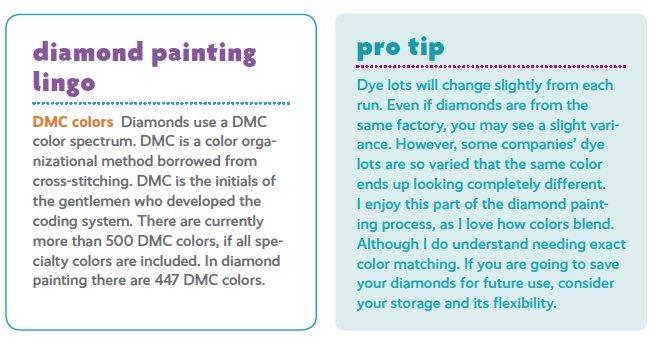
Special diamonds are any diamonds that are not the standard round/square size/shape.
◆ AB Diamonds: AB stands for Aurora Borealis, named after the northern lights. An AB has a special coating on top of a diamond that gives it an extra shimmer.

◆ Special Shaped: A diamond shaped any other way other than a standard diamond. They can be smaller rounds/squares, pearls, oval, tear drop, and more.
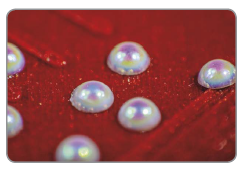
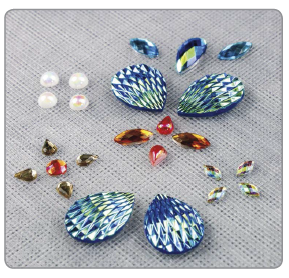
◆ Crystals/Rhinestones: A diamond with a metallic shine caused by a colored foil coating on the bottom of a clear diamond.

◆ Sparklers: A diamond with a unique level of facets and a flat top, allowing light to dance throughout the canvas.
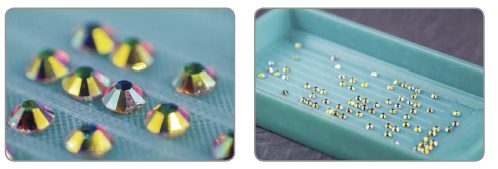
Diamond Issues
As beautiful as diamonds are, they also have a dark side. These angels of beauty (to paraphrase Phantom of the Opera) have bad days. Some difficulties diamonds may experience:
◆ Tags: A diamond is cut into its shape by the sharpness of the mold. If the mold is not replaced consistently, a clean cut cannot happen. This is how a diamond acquires a tag. A tag can be on the corner or the side of a square drill. The definition of a tag is extra plastic not meant to be on the diamond that therefore does not allow the diamond to be placed accurately. It may cause diamond popping or gapping.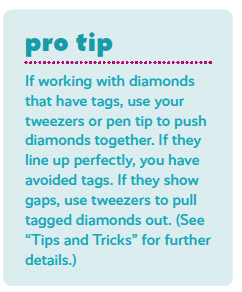
◆ Concave: If a diamond mold is not completely filled when pushed through the cut-ting template, the diamond will not have a flat bottom, causing it to buckle, crack, bend, or flip off the canvas.

◆ Flaking: This occurs to the rhinestone diamonds. As they are clear or tented diamonds with a colored foil bottom, it is easy for the foil to flake off or be attached the incorrect way (e.g., color side down).
◆ Stuck: Diamonds packaged together when not yet fully cooled or dried may stick together. Most of the time, a diamond grinder gives enough pressure for the diamonds to detach from themselves and be usable.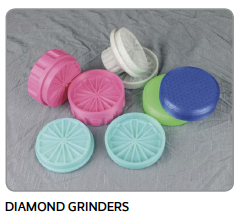
◆ Oily: When a diamond is not allowed to dry from the molding process, the oils from the cutting process are left as residue on the diamonds.
◆ Static: Going through different climates while traveling across the country—and sometimes the world—can add static to the diamonds. Simply add a dryer sheet or scent booster dots to your diamond storage and when you go to use the diamonds, they will be static free.
◆ Diamond Shortage: If you find at the end of your diamond painting experience you are short of diamonds, have no fear, Etsy is near. There are many stores on Etsy to purchase diamonds, both round and square and in every DMC color. Check out the resource section for more details.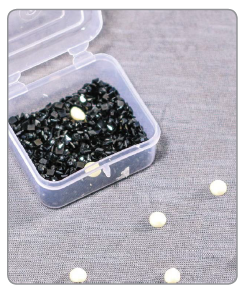
Final Thoughts
Diamonds are amazing treasures. Using thousands of pieces of plastic to create a mosaic masterpiece is one of the most rewarding crafting experiences I have had. What type of diamond painting I choose—round, square, special, rhinestone—depends on my mood. I love the flexibility and variety of this craft. What diamond is your favorite?
